
Every Woman Counts
The 2023 theme for International Women's Day is Every Woman Counts (Government of Canada) and #EmbraceEquity (IWD).
The University of Calgary's Office of Equity, Diversity and Inclusion is collaborating with the University of Alberta's Office of Equity, Diversity and Inclusion to focus on mitigating caste-based discrimination, gender and intersectionality on March 8th and March 21st.
Since March 1911, the global community has paused on March 8th to highlight the contributions of inspiring and courageous women, take stock of the status of diverse women in all spheres of society, and to identify policies and strategies to achieve equity and justice at the intersections of gender, race, class, disabilities, and sexual orientation. This year, we are stressing the urgency of including caste.
Let’s recognize successful women around us and remind today’s youth that their dreams for a more just society is possible. All girls and women from all ages and walks of life have a place in all spheres of Canadian and global society.


Frequently Asked Questions (FAQ)
Caste-Based Discrimination Initiative
Caste is a 2,500-year-old system of dehumanization, division of labour, and discrimination that continues to shape the lives and life chances of over 1 billion people in any context and space where people from the South Asian subcontinent live. It is a system of inequality and violence that is written into Hindu scripture and by ancient Hindu lawmakers (Manu); pre-ordaining the spiritual and social status of human beings in life, labour, and death, based on the caste group into which they were born. Brahmins are at the apex of the caste hierarchy and the purity, worth, and dignity as humans that are attached to people born into the Brahmin caste is anchored in this fact. Brahmins, Kshatriyas, and Vaishyas are savarna, a term used to describe the three dominant caste groups who control most of the power and resources in social relationships in a society founded upon Brahminical supremacy.
There are four castes within the caste system and labour is divided accordingly. Brahmins have claimed monopoly control over religious and secular knowledge. Next in the caste hierarchy are Kshatriyas who are warriors, associated with political, state, and military power. Vaishyas are merchants, traders, and moneylenders who hoard considerable power in the economic sphere. And fourth in the caste hierarchy are Shudras, who constitute the working classes in agrarian, industrial, and service sectors. These four castes are within the caste system. Outside the fold of the caste system are Dalits who were derogatorily known as “untouchables” because their occupations were considered too polluting. In fact, the caste system dictated that their birth predestined and bonded them into the occupations of cleaning human waste, handling human and animal corpses, handling flesh and meat. The chosen title of Dalit literally means broken, but as a political and intellectual identity, it is a rallying cry and mark of resilience for those derogatorily labeled “untouchables”. Also outside the fold of the caste system are the region’s Indigenous peoples known as adivasis. Bahujan translates literally to mean much of the people. Dalit Bahujan is a term that is used to indicate political solidarity among those exploited, dispossessed, and oppressed by a Brahminical supremacist state and ideology, including shudras, adivasis, Dalits and those who converted out of Hinduism to escape caste such as Muslims and Sikhs.
While these four categories within the caste system have hundreds of sub-categories in practice, and there are considerable differences in the caste hierarchy in different regions of India, the primary characteristics of spiritual and social status attached to caste groups has been a resilient feature of the system across space and time. This resilience is explicable when we notice that caste endogamy is enforced through heteropatriarchal control over sexual reproduction, marriage, and sexual violence, alongside caste apartheid in work, residence, commensality, food practices and education—all routine ways in which the caste system is maintained across space and time. Here is an image that depicts the caste system created by the Dalit feminist civil rights organization Equality Labs, based in the United States.
It can be tempting for dominant caste communities to think, feel, teach, and learn that the caste system was an ancient practice, or, at worst, one that occasionally emerges in the Indian landscape in rural areas that have not caught up to modernity. But that would be a fiction belied by statistics and evidence in lived experience. Dominant castes who saturate academia have also peddled the prominent postcolonial theorization that caste was an invention of British colonialism, but that is not the case. Colonial laws simultaneously opened up land markets and education to Dalit Bahujan and embedded caste into capitalist systems of accumulation by dispossession. The caste system was thus consolidated by British colonial capitalism but also preceded and outlasted it, if not gaining an entrenched modern reality in contemporary Indian society and state.
Mohandas Gandhi led a mostly dominant caste Indian nationalist movement and gave Dalits the patronising name of Harijan, meaning “children of God.” Gandhi focused on abolishing untouchability but not the caste-based division of labour itself which he viewed as innocuous and functional. Starting in the mid-19th century, Bahujan leaders Jyotiba and Savitribai Phule, as well as Fatima Sheikh and others, constructed an anti-caste theory and political action, centred on reclaiming access to education understood as political consciousness. The visionary Dalit leader, theorist and architect of the Indian constitution, Dr. B.R. Ambedkar built on this legacy and scripted the slogan “Educate, Agitate, Organize” to mobilize the formation of the mass Dalit movement at the turn of the 20th century. Dalit Bahujan women were a crucial part of both of these historical moments of mobilizing against caste apartheid.
The postcolonial Indian state may have legally abolished untouchability, but in reality, caste apartheid is a part of everyday, institutional, rural, and urban reality in India. According to the Indian Human Rights Commission Report on Caste Atrocities, cited in Dalit feminist organizer and theorist Thenmozhi Soundararajan’s book The Trauma of Caste, in India, which remains the epicentre of caste apartheid, “every hour two Dalits are assaulted; every day three Dalit women are raped, two Dalits are murdered, and two Dalit homes are torched. A crime against a Dalit happens every eighteen minutes” (Soundararajan 2022, p. 16; see also, Saxena 2004, p. 33 here). Drawing on the 2004 report, Soundararajan notes that:
- 37% of Dalits live below the poverty line
- 54% of Dalit children suffer undernourishment
- 83 out of 1000 Dalit children die before they turn one year old
- 45% of Dalit population do not know how to read and write
- 33% of Dalit households do not have basic facilities.
- 33% of villages have Dalit homes where public health workers refuse to visit
- 28% of villages have police stations where Dalits cannot enter
- 38% of government schools have Dalit children sit separately
- 48% of villages deny Dalit people access to water sources
- 1 in 4 Dalit women between 15 and 49 is under-nourished
- 67% of Dalit women have experienced sexual violence
- 39 is average age of death for Dalit women
The numbers are staggering and express the magnitude of the effects of caste discrimination in India.
Caste violence, discrimination, and aspirations for liberation from caste travel with the diaspora, not least under colonial rule and the indentured labour system that spread across Oceania, the Caribbean, the Americas, South Africa, and Southeast Asia. Caste has subsequently traveled with the diaspora—both as an escape from caste oppression and as a privilege of caste mobility and every intersectional complexity between migration and dispossession.
The postcolonial Indian government terminology for those formerly known as “untouchables” who self-designate as Dalits, is the term Scheduled Castes. As Rawat and Satyanarayana note, the formation of the National Federation of Dalit Women in 1995, Dalit participation in the World Conference against Racism, Racial Discrimination, Xenophobia and Related Intolerance, and the growth in publication of Dalit literature animated Dalit resistance and voice in the public sphere. The Indian government’s reservation policies (affirmative action) for Scheduled Castes in the spheres of education and employment contributed to the growing numbers of Dalit peoples in higher education and those employed in professions outside those pre-ordained by the caste system. This has strengthened larger numbers of Dalit Bahujan peoples in the diaspora calling attention to caste discrimination wherever it exists. As per the 2016 report, Caste in the United States researched and produced by Equality Labs,
- 25% Dalit people report verbal or physical assault
- 1 in 3 Dalit students report discrimination during their education
- 2 out of 3 report being treated unfairly in their workplace
- 60% report experiencing derogatory jokes and comments
- 40% report feeling unwelcome in places of worship
- 20% report feeling discriminated at a place of business due to caste
- 40% Dalits report being rejected in romantic relationships due to caste
- 1 in 2 Dalit people fear being outed.
One cannot understand the resilience of the caste apartheid without attention to the heteropatriarchal structures and relationships that enforce caste endogamy through prohibiting inter-caste marriage, through sexual violence and even death. Dalit women’s bodies are simultaneously considered a source of pollution and an object through which Brahminical heteropatriarchal power is expressed. This explains why Dalit feminism has been the foremost feminist formation on the subcontinent even though its history and centrality continues to be erased in dominant caste feminist scholarship, practice, and leadership.
As Dr. B.R. Ambedkar noted, caste is a division of labourers, that is written into division of labour in society. As such, class cannot be understood distinct from caste and its specificities of gendered, sexual violence, labour exploitation, landlessness, social reproduction and resistance. Furthermore, caste power may be extreme at the top, but it takes the whole system of what Ambedkar referred to as “graded inequality” to uphold the hierarchy wherein each one is spiritually and materially sustained by being more ostensibly pure and powerful than those cast as more spiritually and materially polluted in the next rung down—everyone ultimately feeling superior to the Dalit outside caste’s fold.
While caste was scripted by Hinduism and originally institutionalized and protected by a Hindu state, over the centuries, caste has infiltrated every religious community in the subcontinent, including those religions and sects formed or drawing conversion out of Hinduism as an escape from caste—Buddhism, Sikhism, Islam, and Christianity. This is why caste is found in communities of every religion on the subcontinent, and their diaspora.
As Dalit leaders, theorists, and communities have made clear, caste discrimination is a multi-layered social, cultural, historical phenomenon that is as deeply personal and physiological as it is imaginative, creative, material and institutional. To eliminate caste discrimination requires an equally complex and multi-layered approach that resists every instance and manifestation of caste apartheid. It stretches from interpersonal relationships that refuse caste boundaries to institutional protections that recognize the specific nature of caste hierarchies and violence within apparently-shared categories such as class or religion or race or national origin or ancestry. To eliminate caste discrimination will also require governments and educational institutions at all levels and intergovernmental organizations to ban the practice of caste apartheid in public life with the effect of blocking access to any and all resources when such practices are evident in effect. Dalit feminist Soundararajan defines caste abolition as the “interconnected political, social, cultural, somatic, spiritual and economic project of annihilating caste and caste apartheid. Drawing on a legacy of Black and Dalit solidarity, this phrasing intentionally evokes the abolition movement in the United States, linking Black and Dalit liberation to move us toward an overhauling of society to co-create liberatory futures beyond systems of exclusion and violence” (p. 217). Ultimately, Dalit Bahujan feminists have shown that caste constitutes the deep structure of modern capitalism and colonialities across the planet and conceptions of decolonization, abolition, and liberation have a world to win in this recognition.
Ambedkar, B. R., & Rodrigues, V. (2002). The essential writings of B.R. Ambedkar. Oxford University Press.
Ambedkar, B. R. (1936). Annihilation of Caste.
Arya, S. (2020). Dalit or Brahmanical patriarchy? Rethinking Indian feminism. Caste: A Global Journal on Social Exclusion, 1(1), 217–228.
Caste in the United States: A survey of Caste among South Asian Americans. (2018). Equality Labs.
Chakravarti, U. (1993). Conceptualising Brahmanical patriarchy in early India: Gender, caste, class and state. Economic and Political Weekly, 28 (14), 579–585.
Gidla, S. (2017). Ants among Elephants: an untouchable family and the making of modern India (First Edition.). Farrar, Straus and Giroux.
Guru, G. (2003). How egalitarian are the social sciences in India? Economic and Political Weekly, 37(50), 5003–5009.
Jangam, C. (2017). Dalits and the Making of Modern India. Oxford University Press.
Kamble, B. (2008). The prisons we broke. Orient Black Swan.
Madan, A. (2020). Caste and class in higher education enrolments: Challenges in conceptualising social inequality. Economic and Political Weekly, 55(30), 40-47.
Omvedt, G. (1994). Dalits and the democratic revolution: Dr Ambedkar and the Dalit movement in colonial India. SAGE Publications India.
Paik, S. (2014). Dalit women’s education in modern India: Double discrimination. Routledge.
Paik, S. (2020). Dalit women’s agency and Phule-Ambedkarite Feminism. In S. Arya (First Edition.), Dalit feminist theory: A reader (pp. 65-87). Routledge.
Patel, S., & Nath, N. (2022). What can ‘settler of colour’ teach us?: A conversation of the complexities of decolonization in white universities. In A. Gerbhard, S. McLean & V. St. Denis (Eds.), White benevolence: Racism and colonial violence in the helping professions (pp. 146-162). Fernwood.
Pawar, U., & Moon, M. (2008). We also made history: Women in the Ambedkarite movement. Zubaan Books.
P. M, Lata (2015, May 7). Silenced by Manu and ‘mainstream’ feminism: Dalit Bahujan women and their history. Savari.
Rawat, R. S., & Satyanarayana, K. (Eds.). (2016). Dalit studies. Duke University Press.
Saxena, K. B (2004). Report on the Prevention of Atrocities against Scheduled Castes. National Human Rights Commission. National Human Rights Commission, India.
Soundararajan, T. (2022). The trauma of Caste: A Dalit feminist meditation on survivorship, healing, and abolition. North Atlantic Books.
Initiative to Mitigate Caste-Based Discrimination
The Frequently Asked Questions (FAQ) resource was developed by Dr. Dia Da Costa (Professor of Educational Policy Studies in the Faculty of Education at the University of Alberta, Brahmin settler) to support the collaborative initiative between the Offices of Equity, Diversity, and Inclusion at the UAlberta and the UCalgary to raise awareness toward the development of a nondiscrimination policy. For questions about or corrections and additions to this FAQ resource, please contact vpedi@ualberta.ca and vpedi@ucalgary.ca.
Toward Making Caste-Based Discrimination a Protected Ground: A Virtual Panel Series
A collaboration between the University of Alberta and the University of Calgary
Efforts to officially make caste—a millennia-old system of stratification, division of labour, and discrimination— a protected category are well underway in postsecondary institutions throughout the United States. The conversation has yet to begin at educational institutions across Canada. The UAlberta and the UCalgary are collaborating with international activists and scholars on a series of conversations to raise awareness about caste-based discrimination.
Panels include an International Women’s Day discussion with Dalit-Bahujan feminist theorists, artists, historians, activists, and organizers, as well as a roundtable on the International Day for the Elimination of Racial Discrimination with Dalit-Bahujan leaders instrumental in the struggle to make caste a protected category in North American universities. A conversation with Dalit-Bahujan and dominant-caste (savarna) student leaders will close out the series during Dalit History Month in April.
We acknowledge the intellectual labour and vision of Dr. Dia Da Costa (Professor of Educational Policy Studies, UAlberta, Edmonton) and Dr. Shaista Patel (Assistant Prof Critical Muslim Studies, UCalifornia, San Diego), as well as the UCalgary and UAlberta EDI teams in helping to come up with the event topics, speakers, resources and communications strategies necessary to host this series.
Panel I: Dalit-Bahujan Feminist Knowledges and Praxis
Wednesday, March 8th, 2023
International Women’s Day
12 - 1.30 p.m. MST
There is no better place to start this engagement than with the profound theoretical and political knowledge called Dalit-Bahujan feminist knowledge. This International Women’s Day 2023, with the theme of “Every Woman Counts,” we have the opportunity to hear from four extraordinary Dalit-Bahujan feminist theorists, artists, historians, activists, and organizers. Come and learn about caste; how Dalit-Bahujan women and non-binary peoples are affected by it; and how they have been organizing across educational, cultural, labour, land and other institutions, one step and space at a time.
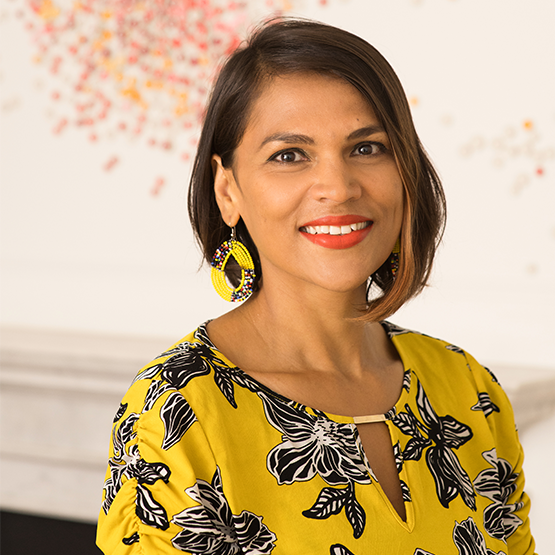
Born and raised in rural India, Prachi was raised by a freedom-fighter grandmother and parents deeply involved in anti-caste, feminist, and peasant movements. Over two decades in New York City, she has been an activist, educator, grantmaker, and writer involved in social movements which link the local and the global, police brutality and war, migration and militarization, race and caste, women of colour feminism and global gender justice.
Prachi is the Senior Program Officer at Foundation for a Just Society, where she leads the program to fund gender justice movements in South and Southeast Asia. Through her work with organizations such as Afghan Women’s Mission, CAAAV and Palestine Education Project, Prachi has been involved in innovative projects to link social justice movements between the United States and the Global South.
She serves on the Advisory Board of the Human Rights Funders Network and the Grantmakers for Girls for Color. Prachi believes in the vital power of intersectional and international visions and strategies, which resonate across Dalit rights and Black lives, migrant justice and gender justice, to build bottom-up change from the local to the global.
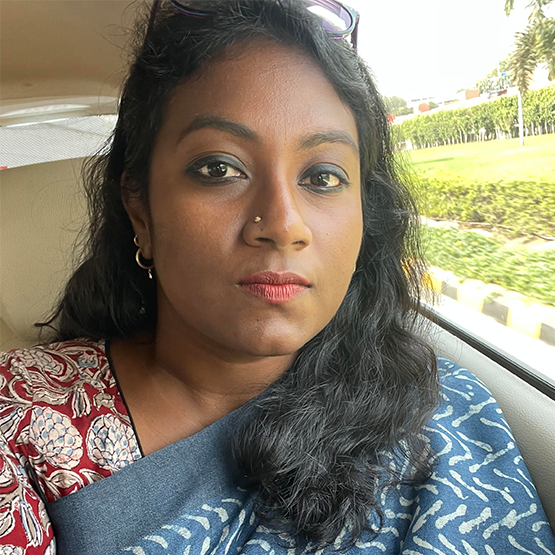
Epitomizing the hereditary practices and the lineage of performers and teachers and carving out her own space as a performer of Bharathanatyam with impeccable training and vast creativity, Nrithya represents a new kind of artistic and intellectual engagement with the troubled history of Bharatanatyam in the long 20th century. She vigorously challenges the power relationships and ideologies that made the form unavailable to women of her community and advocates fiercely for restoring credit for the Bharatanatyam technique, repertoire, and philosophy to the hereditary community of practitioners. Her performances and writings about the upper caste appropriation of this form, which have evoked both enthusiastic accolades and awards on the one hand and vicious resistance on the other, are embodied in research and socio-political intervention.
Nrithya’s voice, raised against casteism in the contemporary dance world, is unique in the field today, and her message against historical misrepresentation is relevant and robust. Her performances and writings about the privileged-caste appropriation of this form have evoked both enthusiastic accolades and awards on the one hand and vicious resistance on the other.
She runs a series entitled “Re-casteing Culture” for The News Minute. She regularly contributes to The Economic and Political Weekly, The Hindu, The Times of India, The Telegraph, Firstpost, and other digital news platforms. Universities and colleges regularly invite her worldwide to deliver talks and participate in conversations around caste and culture in South Asia.
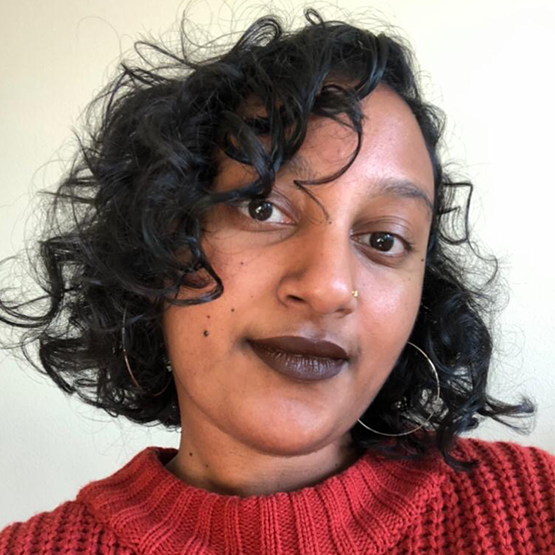
Esha Pillay is an Indo-Fijian writer based in the U.S. whose research looks into intergenerational traumas among Indo-Fijian communities who are descendants of indentured labour and Girmit. She focuses on caste violence throughout Girmit and in the present and challenges the "post-caste" narrative among descendants of indenture. Her family stories and lived experiences guide her activism and story-telling across various digital platforms. Esha used to host a dedicated Instagram account, coolie_returns, to share further marginalized histories within larger indentured labour histories across different countries, islands, and diasporas.
Her educational posts are now accessible on her website, and you can find her other writing and projects here.
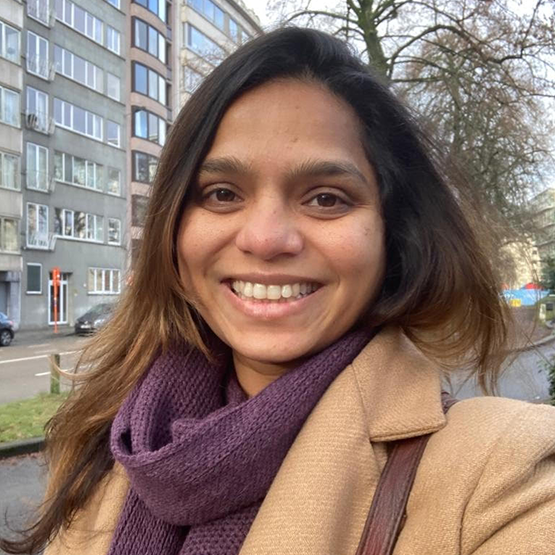
Dr. Swati Kamble is an anti-caste intersectional feminist researcher-activist. Her research broadly focuses on human rights and social justice movements, decolonization and intersectionality. She has a PhD in socio-economics from the Faculty of Social Sciences at the University of Geneva. Her doctoral research focused on the political mobilization of India's caste-affected, caste-oppressed communities, their history, and how this movement has shaped oppressed caste women activists into agents of change. She studied how Dalit women activists influence policy processes by negotiating and navigating andro-centric, upper-caste bureaucratic spaces of power. Additionally, she has studied the Roma women’s movement in Hungary and how the European decade for Roma inclusion plan’s policy did not reflect the issues of Roma women that the Roma civil society has been advocating for.
She is researching the digital activism of Dalit women and middle-class Dalit women’s mobility in the Indian neo-liberal market. She is also collaborating with Dalit, indigenous and marginalized groups and organizations in India on a project around mapping and archival of indigenous forms of knowledge and decolonization.
Panel II: The Problem of Caste in the North American University
Tuesday, March 21, 2023
International Day for the Elimination of Racial Discrimination
12 - 1.30 p.m. MST
On the International Day for the Elimination of Racial Discrimination 2023, we will be joined by four Dalit-Bahujan leaders who have been instrumental in the struggle to make caste legible and a protected category in North American universities and other institutional contexts. Come and learn from their research and experiences, how caste-based discrimination and violence manifest in the North American academy. The panelists will consider the challenges faced by Dalit-Bahujan students, staff, and faculty in universities and other spaces. They will offer insights into how caste operates in everyday environments, how they organize for social and institutional change, and what you can do to effect change.
Panel III: Organizing to Make Caste a Protected Category
Information forecoming

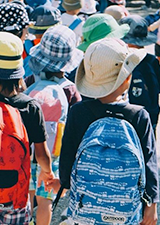
Why I Am Grateful for the Toronto School Board's Resolution on Caste
By Trina Kumar | The Wire
March 10, 2023
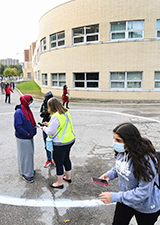
TDSB votes to recognize that caste oppression exists in Toronto schools
By Uday Rana | The Globe and Mail
March 8, 2023
The Globe and Mail

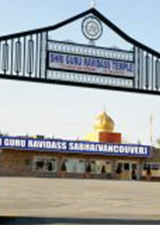
Caste in Canada: The Unheard Stories of Dalit Canadians (2020-23)
Primary Investigators: Dr. Anne Murphy (UBC) and Dr. Suraj Yengde (Oxford)
2020 - 2023
University of British Columbia

US universities add policies to counter caste-based discrimination
By IANS, New York | Business Standard
December 9, 2022
Business Standard

Brown University adds caste to nondiscrimination policy
By News from Brown | Brown University
December 1, 2022
News from Brown
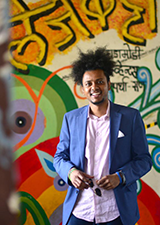
Harvard Grad Student Union Contract Bolsters Advocacy Against Caste Discrimination
By Elias J. Schisgall | The Harvard Crimson
October 13, 2022
The Harvard Crimson

How prejudice rooted in an ancient social system has migrated from India to Canada
By RCI | Radio Canada International
May 16, 2022
Radio Canada International
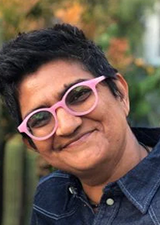
Why Campuses Are Including Caste in Anti-Discrimination Policies
By Rebecca Kelliher | Diverse: Issues In Higher Education
March 21, 2022
Diverse: Issues In Higher Education

Brandeis Becomes First US University to Ban Caste-Based Discrimination
By Mariah Bohanon | INSIGHT Into Diversity
February 12, 2022
INSIGHT Into Diversity

‘Watershed’: Dalits hail US university’s caste discrimination ban
By Raqib Hameed Naik | Al Jazeera
February 11, 2022
Al Jazeera

The push to end caste-based discrimination on campus
By Maria Carrasco | Inside Higher Education
February 4, 2022
Inside Higher Education

The Fight Against Caste Oppression Comes to US Higher Education
By Aparna Gopalan | Non Profit Quarterly
January 31, 2022
NPQ
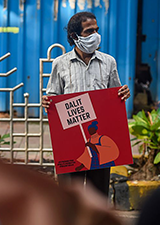
Colleges and universities across the US are moving to ban caste discrimination
By Harmeet Kaur | CNN
January 30, 2022
CNN News
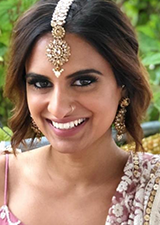
Caste and South Asian Canadian Youth – The Real Lived Experience
By Sharanjit Sandhrs | South Asian Studies Institute
October 21, 2021
University of the Fraser Valley

Caste on campus: Looking at social exclusions of Dalits in the U.S. colleges
By Suman Guha Mozumder and Bhargavi Kulkarni | India Abroad
March 19, 2019 - Updated March 26, 2019
India Abroad
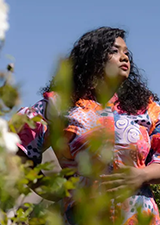
‘Caste is anti-Asian hate’: the activists fighting ‘less visible’ discrimination in the US
By Claire Wang | The Guardian
April 17, 2023
The Guardian
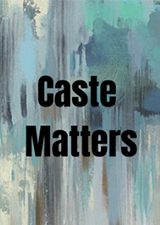
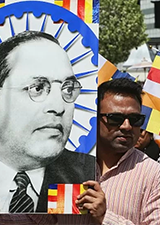

The Movement to Outlaw Caste Discrimination in the U.S.
By Rohit Chopra and Ajantha Subramanian | Time
February 11, 2022
Time Magazine
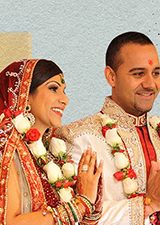
How Indian-Canadian Culture Perpetuates Caste System
By Meere Estrada | Refinery29
December 9, 2021
Refinery29
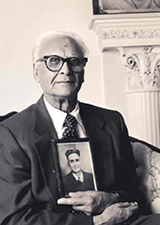
Indian caste system in Canada called 'a disease' worse than racism
By Jason D'Souza | CBC News
May 28, 2015
CBC News
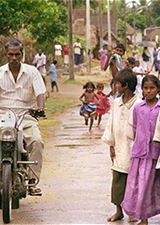
Gurpreet Singh: Canada needs to stand up for Dalits
By Gurpreet Singh | Georgia Straight
October 26, 2013
Georgia Straight
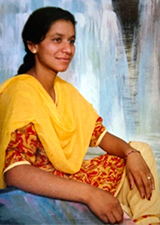
‘We are zero’: Immigrant says she can't escape sting of India's caste system, even in Canada
By Postmedia News | National Post
October 10, 2013 • Last updated January 25, 2015
National Post


